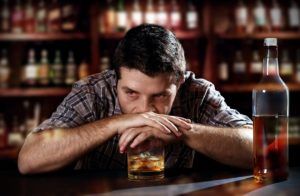 Gone are the glamorous days when we could sit with pilots at an airplane bar and have a few drinks. These days, any pilot who drinks alcohol and tries to fly a plane can have their pilot license suspended or revoked. Much like anyone with a driver’s license, there are specific BAC and other alcohol guidelines that must be adhered to so that we’re not worried our safety is up in the air… while up in the air.
Gone are the glamorous days when we could sit with pilots at an airplane bar and have a few drinks. These days, any pilot who drinks alcohol and tries to fly a plane can have their pilot license suspended or revoked. Much like anyone with a driver’s license, there are specific BAC and other alcohol guidelines that must be adhered to so that we’re not worried our safety is up in the air… while up in the air.
Federal Aviation Regulation (FAR) 91.17 says that no person may operate or attempt to operate an aircraft:
- Within 8 hours of consuming alcohol.
- While under the influence of alcohol.
- With a blood alcohol concentration (BAC) of .04 percent or greater.
- While under the influence of any other type of drug or intoxicating substance.
.04 percent BAC is also the legal limit for a commercial driver’s license (CDL) holder, and any violations could result in a DUI, ignition interlock requirement or worse. Pilots cannot have ignition interlock devices on planes, but there are states that can order the device for a flying while intoxicated (FWI) violation.
The guidelines for pilots who fly our planes aren’t the only limits the FAA puts on in-flight alcohol. Even the rest of us have rules to follow, like we cannot drink alcohol we bring on a plane, no matter how stressful the flight could be. Instead, as airline passengers, we can only drink the refreshments served by flight attendants.
Also, there are limits to the types of alcohol you can take on a plane, so leave the high-proof Everclear at home.
We can’t drink with pilots, we can’t drink our own alcohol when flying the friendly skies. Those glamorous days are long behind us, with safety as a top priority in airports across the country. A .04 BAC is enough to get a DUI in a car, where many airline passengers end up after the flight has landed, and nobody wants an intoxicated pilot in charge of that landing. Airports are just as concerned with passenger safety as those of us on the roads, with the same types of regulations that need to be followed.

 Maryland Ignition Interlock Device Financial Assistance
Maryland Ignition Interlock Device Financial Assistance